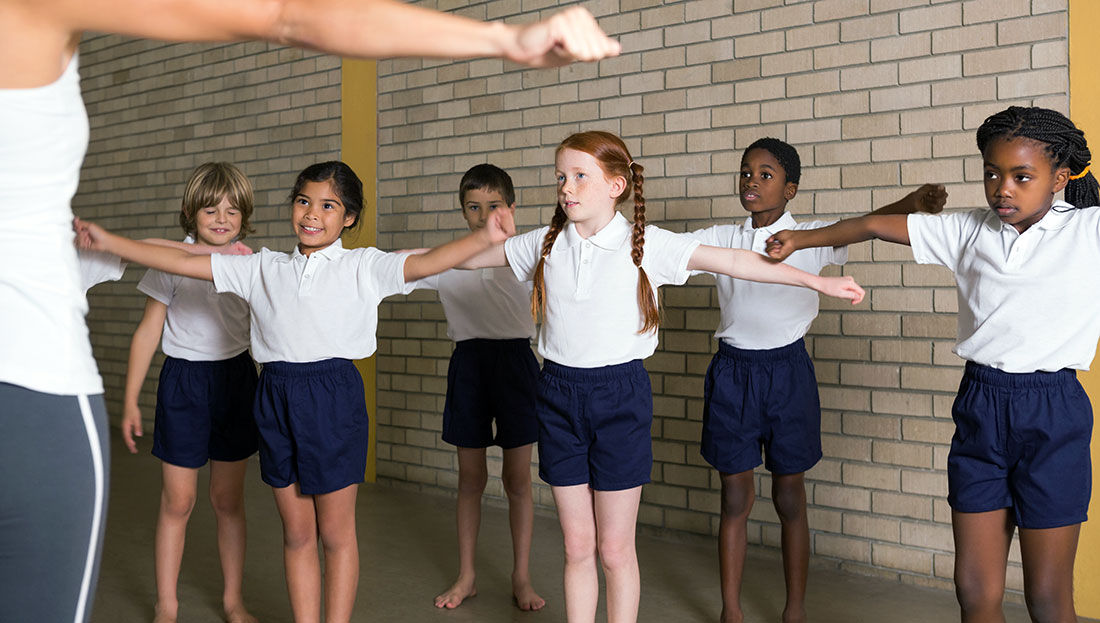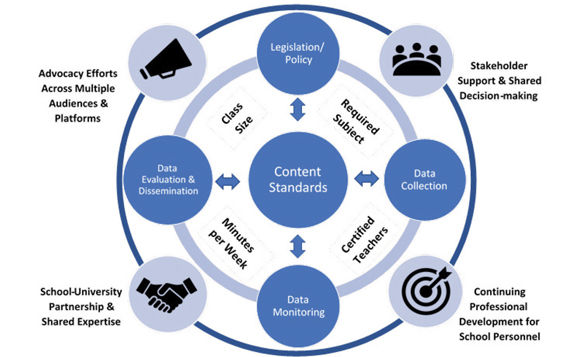
The Every Student Succeeds Act (ESSA), which passed in 2015, redefined expectations for physical education (PE) in K-12 schools by including PE as a “core academic subject” and recognizing PE as an essential component of a “well-rounded education.”
All health and exercise professionals know the negative consequences that physical inactivity has on the health and overall well-being of youth, especially when coupled with poor dietary habits and any associated weight gain. The shift in policy that came with the implementation of ESSA reinforces the potential contribution that PE makes in addressing childhood obesity, sedentary lifestyles and physical literacy among youth.
PE now shares an increased expectation for demonstrating student learning with other comparable subjects, at both state and local levels. Furthermore, ESSA funding requires evidence of student learning in PE, which makes the implementation of state-level accountability systems vital. While PE is mandated across the U.S., the requirements vary by state and there is an unclear picture of the accountability policies and systems in place.
The first step in the process of mapping the path forward is finding out the current status of state-level accountability systems for student learning in PE, with a goal of providing policymakers and school leaders with valuable information that will inform decision making in policy, standards, curriculum, instruction and assessment. That is the focus of the research described here, which was conducted by West Virginia University, Action for Healthy Kids and Active Schools, and Alliance for a Healthier Generation, through joint funding from the American Council on Exercise and the American Heart Association.
The Study
In addition to reviewing publicly available documents related to school policy, the researchers conducted a web-based survey with representatives from all 50 states and the District of Columbia. A total of 43 representatives completed the survey and five responded via email to some extent.
The survey consisted of questions in six categories:
- Demographic background
- Requirements for physical education
- Physical education standards
- Physical education assessments and accountability
- Accountability system implementation
- Overall (factors that helped and challenged the development and implementation of the accountability system)
For the representatives that reported having a state-level accountability system in place, further analyses and follow-up surveys were conducted. The follow-up survey consisted of six open-ended questions that solicited recommendations for developing, implementing and sustaining accountability systems; information regarding the rationale for the structure of the current system; plans to measure additional student learning outcomes; and recommendations that could be beneficial to other states in developing their own accountability systems.
The Results
Among the 48 respondents to the initial survey, 11 indicated that they had an accountability system in place to measure student outcomes (Connecticut, Delaware, Washington, D.C., Georgia, Illinois, Missouri, New Mexico, Ohio, Texas, Virginia and West Virginia), though Texas declined to participate in the survey. Of the remaining 10 states, six measured fitness outcomes, two measured multiple content standards and one assessed cognitive outcomes.
Clearly, there is a need for further development of accountability systems for PE across the country. For PE to truly become a priority in schools, all key stakeholders need to take the initiative in developing accountability systems that promote student learning. Decision makers and PE experts should collaboratively determine a course of action that best meets the needs of teachers, students, families and school-community stakeholders.
To read the full results of the surveys or to see details on how your home state responded, view the complete report here.
The Framework of Accountability Systems
The results of the study revealed that there were four critical elements necessary for robust accountability systems:
- Legislation/policy to mandate implementation
- Utilization of an online system to facilitate data collection and analysis
- Data monitoring processes to ensure validity and reliability
- Data dissemination/evaluation strategies to inform key stakeholders of current status and future directions
In addition, researchers found school leaders and other key stakeholders must work together to address the fundamental elements of school policy and the environment in physical education. Without these foundations, student learning cannot be maximized.
The results of the study were organized using a proposed framework called Student Learning Accountability Cycle for Physical Education, or SLAC-PE (Figure 1), which graphically represents the critical elements of a robust accountability system for student outcomes in physical education.

Figure 1. Student Learning Accountability Cycle for Physical Education
This framework represents the primary aspects of accountability systems: critical elements of a robust accountability system, fundamental elements of school policy and the environment in PE, and facilitators of an effective accountability system.
The development of such systems at the state or local level is a resource-intensive undertaking, and success is contingent in part on the generation and maintenance of stakeholder support, and shared decision making is an essential strategy in garnering that support. Training and periodic retraining of school administrators and personnel is needed to guard against drift in protocol administration over time.
Partnerships between schools and universities offer great promise as a strategy for maximizing shared expertise. For example, university researchers can offer specialized skills in the areas of design and data collection, analysis and interpretation, while teachers can help define the complexities of school-based assessment.
What Does This Research Mean to Health and Exercise Professionals?
Given the low number of states that have implemented accountability systems and processes to monitor the success of their PE curricula, it is incumbent on health and exercise professionals and the entire fitness industry to advocate for the health and wellness of the children in our communities. Get involved, start an after-school program, offer youth classes in your fitness facility, volunteer—whatever it takes to make a positive impact on the health of today’s youth and tomorrow’s young adults.





 by
by 



